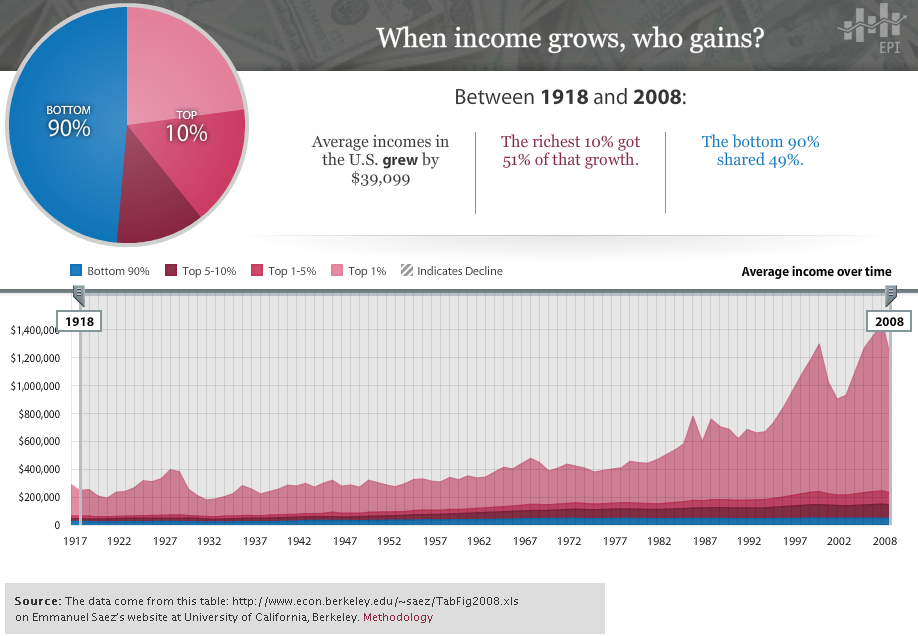For Immediate Release: Wednesday, December 21, 2011
Contact: Phoebe Silag or Karen Conner, news@epi.org 202-775-8810
11 telling charts from 2011
Click here to see charts in full scale.
Job-seekers ratio
There are currently more than four unemployed persons for every job opening. While this ratio of job seekers to openings has improved since the depth of the recession, there is still a long way to go to reach a healthly job market.

—From Job-seekers ratio remains above 4-to-1 for 34th straight month
Slack in the labor market
The labor market remains weak. In addition to unemployed workers, millions of people who want to work full time can only find part-time work or are so discouraged that they have stopped looking.

—From The State of Working America
Impact on children
The recession has hit kids especially hard. In 2010, 10.6 percent of children had at least one parent unemployed, and 18.4 percent of children had at least one unemployed or underemployed parent.

—From Sept. 8 Economic Snapshot
Too few openings
The number of unemployed workers far exceeds job openings across industries. This suggests that the unemployment problem is a result of the recession, and is not due to a mismatch between work skills and employer needs.

—From The State of Working America
Labor force erosion
The jobs crisis is hitting everyone, regardless of their formal education. Those with higher levels of education are leaving (or never entering) the workforce at the same rate as those with just a high school degree. Those with less than a high school diploma have not seen the same declines since 2009.

—From Dec. 8 Economic Snapshot
Uneven distribution
Over the last quarter century, the vast majority (81.7 percent) of increases to wealth have gone to the wealthiest 5 percent, while those in the middle saw declines in their wealth.

—From Sept. 15 Economic Snapshot
Uneven pie
Incomes have become increasingly unequal over time, with the top 10 percent (and the top 1 percent) taking an outsized slice of the pie.

—From The State of Working America
CEOs vs. workers
Not everyone is feeling the pain of the recession. CEOs continue to fare better, making 243 times as much as the average worker in 2010.

—From Nov. 9 Economic Snapshot
Lack of mobility
African Americans are more likely to experience downward mobility. For example, 45 percent of African Americans whose parents were middle-income are in the bottom fifth, while only 16 percent of whites are at the bottom.

—From The State of Working America
Deficits
Current deficits are mostly due to the automatic effects of the recession (for example, from lower tax revenue) and the emergency efforts to create jobs. Bush-era tax changes and unfunded spending on the wars in Iraq and Afghanistan have also contributed. Without these factors, the deficit would be approximately balanced.

—From May 18 Economic Snapshot
Investments as percentage of GDP
Private companies have increased their investments in equipment and software since the end of the recession. In fact, the pace of investments have exceeded the last three recoveries, suggesting that regulatory costs or uncertainty is not a pressing problem.

—From Regulatory uncertainty: A phony explanation for our jobs problem
http://www.epi.org/publication/11-telling-charts-about-2011-economy/